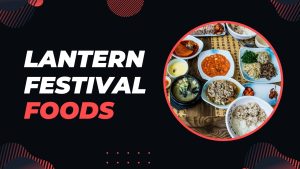The Lantern Festival, also known as the Yuanxiao Festival or Shangyuan Festival, is one of the most beloved holidays in China. Celebrated on the 15th day of the first lunar month (usually in February or early March), it marks the end of the Chinese New Year festivities and symbolizes the coming of spring.
During this magical event, people light thousands of colorful lanterns and release them into the sky or on water, creating a stunning visual spectacle that embodies hope, joy, and unity. But what are the origins of this unusual tradition? What do the lanterns represent, and how are they made? Join us as we delve into the history and culture of the Lantern Festival and discover why it continues to captivate people around the world.
History and Origins of the Lantern Festival: A Journey Through Time
The Chinese Lantern Festival is a colorful and vibrant celebration that marks the end of the Chinese New Year festivities. It is a time when families and friends come together to feast, exchange greetings, and admire the glowing lanterns that adorn the streets and homes. But do you know the complete history and origins of the Chinese Lantern Festival? In this article, we will take you on a journey through time, exploring the festival’s fascinating history and cultural significance.
The Legend of Yuanxiao: The Earliest Origins of the Chinese Lantern Festival
The Chinese Lantern Festival has its origins in the Han Dynasty (206 BCE – 220 CE), and according to legend, it began as a way to celebrate a scholar’s success in passing an imperial exam. The scholar, Yuanxiao, was so overjoyed that he lit lanterns and distributed sweet glutinous rice balls, known as tangyuan, to the common people. The festival quickly caught on, and people began hanging lanterns in their homes and temples, as well as floating them down rivers and lakes.
The Festival of Lights: A Time of Celebration and Joy
As the Chinese Lantern Festival evolved over the centuries, it became an integral part of Chinese cultural tradition, marking the end of the Chinese New Year celebrations, which span fifteen days. During this time, people eat festive foods, light fireworks, and participate in other cultural activities. The festival serves as a time of great joy, reunion, and goodwill.
The Ming Dynasty: The Golden Age of the Chinese Lantern Festival
In the Ming Dynasty (1368 – 1644 CE), the Chinese Lantern Festival reached its zenith, both in terms of cultural significance and the complexity of the lanterns themselves. During this time, artisans crafted lanterns in the shapes of animals, mythical creatures, and even intricate landscapes. The Ming Emperors also had a tradition of hosting grand lantern displays in the palace for the general public to admire.
The Lantern Festival in Modern Times: A Cultural Treasure for All
In modern times, the Lantern Festival continues to be celebrated with great enthusiasm throughout China and in many other countries with Chinese communities. From stunning lantern displays and cultural performances to mouthwatering festive foods, the Lantern Festival offers a rich and vibrant celebration that is cherished by people of all ages and backgrounds. This article will explore the history and significance of the Lantern Festival and how it is celebrated in modern times, highlighting the many ways in which this beloved festival continues to captivate people around the world.
How is the Lantern Festival Celebrated Today?
The Lantern Festival has become a national holiday in China and is celebrated with great fanfare across the country. Here are some of the typical customs and traditions:
- Lighting and releasing lanterns: People make lanterns of different sizes and shapes, often with intricate designs or calligraphy written on them. Some lanterns are shaped like animals or flowers, while others have political or cultural messages. People light candles or bulbs inside the lanterns and release them into the sky or on water, creating a magical and peaceful atmosphere.
- Eating tangyuan: Tangyuan, also known as yuanxiao, is a type of sweet glutinous rice ball stuffed with sesame paste, peanuts, bean paste, or other fillings.



